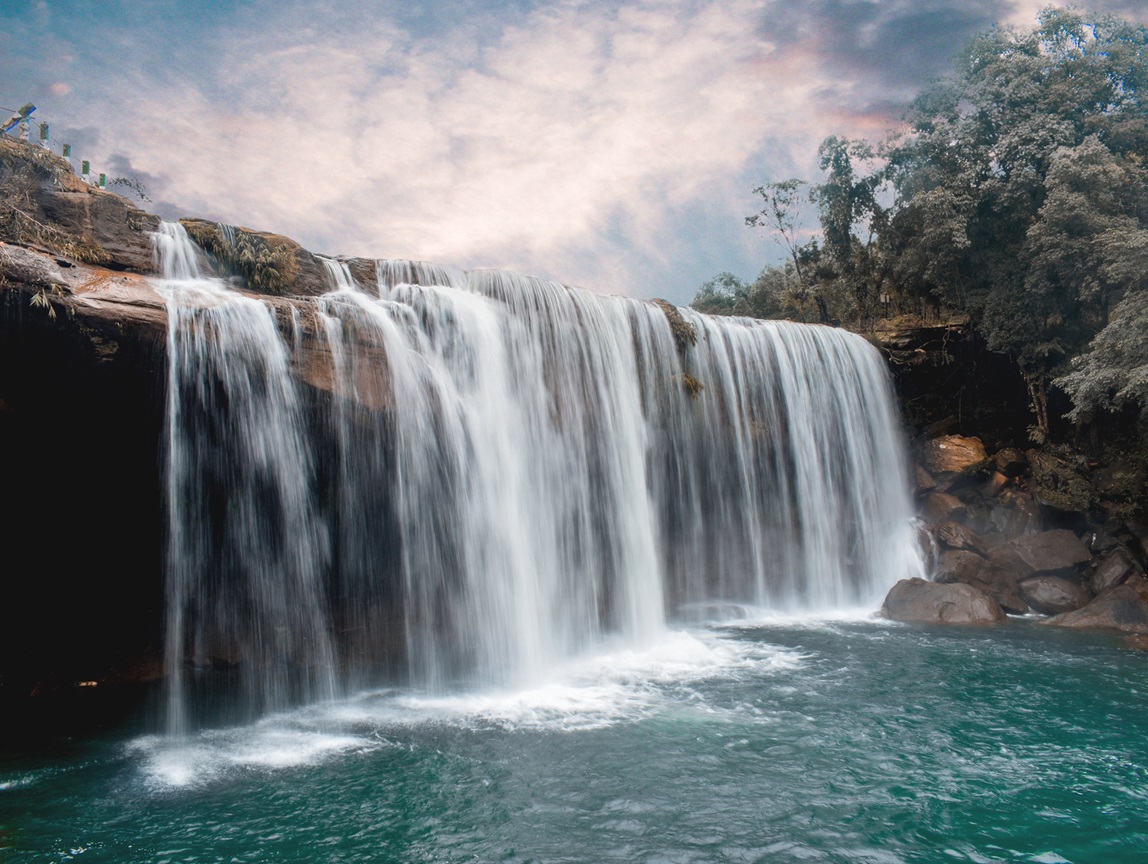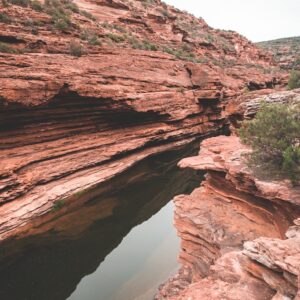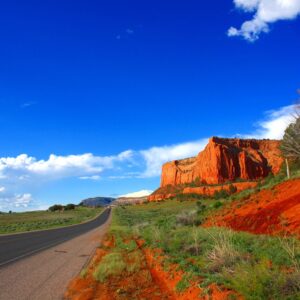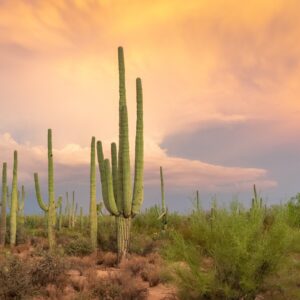In the heart of the Grand Canyon, within the Havasupai Indian Reservation, lies a place of breathtaking beauty and cultural significance. Havasu Falls, along with its neighboring waterfalls, Mooney Falls, Beaver Falls, and Navajo Falls, are some of the most iconic and majestic natural wonders in the United States. These cascading turquoise waters have captured the hearts of nature enthusiasts, photographers, and adventurers from around the world. However, they are not just any waterfalls; they are the lifeblood of the Havasupai Tribe, who have called this remote corner of Arizona home for centuries. Join us on a journey to discover the mesmerizing Havasu Falls, its sister waterfalls, and the rich cultural legacy of the Havasupai people.
The Geography of Havasu Falls
Havasu Falls, renowned for its stunning aquamarine waters, is part of Havasu Creek, a tributary of the Colorado River. The falls are located in a remote and rugged section of the Grand Canyon that is only accessible by foot, horseback, or helicopter. To reach this natural wonder, visitors typically embark on a 10-mile hike from the Hualapai Hilltop trailhead, descending into the depths of the Grand Canyon. The trail is arduous but rewarding, as it leads to an oasis of lush vegetation and cascading waterfalls set amidst the arid desert landscape.
The Havasupai Tribe: Guardians of Havasu Falls
The Havasupai people, whose name means “People of the Blue-Green Water,” have inhabited the Grand Canyon area for over 800 years. Their connection to the land and water is profound, and Havasu Falls is not just a picturesque destination but a fundamental part of their cultural and spiritual identity. The Havasupai Reservation is nestled within the Grand Canyon, and it’s the only Native American tribe that still resides within the national park boundaries.
The Havasupai have a deeply spiritual relationship with the land, believing that it was given to them by the Creator. Their stewardship of the land has ensured that it remains a haven of natural beauty and cultural significance, in harmony with the environment. Visitors to the area are greeted with signs emphasizing the importance of respecting the Havasupai’s land and traditions, creating a unique cultural exchange for those fortunate enough to experience Havasu Falls.
The Cascade of Havasu Falls
Havasu Falls drops over a natural travertine terrace, creating a series of pools of varying depths before flowing downstream. The striking blue-green color of the water is the result of high levels of calcium carbonate and magnesium, which interact with the sunlight to produce this dazzling hue. The falls plunge approximately 100 feet into a large pool, perfect for swimming and cooling off during the hot summer months.
Visitors often describe the experience of approaching Havasu Falls as otherworldly. As the trail leads down to the falls, the soft roar of falling water and the vibrant hues of the pool create a sense of anticipation and wonder. The falls are a popular spot for photography, capturing the ethereal beauty of the turquoise waters against the backdrop of red rock walls.
Mooney Falls: A Hidden Gem
While Havasu Falls is undoubtedly the star of the show, there is another hidden gem waiting to be discovered downstream. Mooney Falls, located a short hike away from Havasu Falls, is equally breathtaking and awe-inspiring. The waterfall cascades a stunning 190 feet, making it taller than Niagara Falls. To reach its base, visitors descend down a series of ladders and through narrow tunnels, enhancing the sense of adventure and mystery.
The journey to Mooney Falls is an experience in itself, as visitors navigate the rugged terrain to witness the plunging cascade from up close. The falls are named after prospector D.W. “James” Mooney, who met a tragic end while attempting to develop the area in the late 19th century. The extraordinary beauty of Mooney Falls serves as a reminder of the power and majesty of nature.
Beaver Falls and Navajo Falls
Beyond Havasu and Mooney Falls, the beauty of Havasu Creek continues with Beaver Falls and Navajo Falls. These cascades, while smaller in stature, offer their own unique charm. Beaver Falls, as the name suggests, is home to several beaver dams, providing a natural habitat for these industrious creatures. The falls consist of a series of smaller drops and pools, creating an inviting environment for swimming.
Navajo Falls, though smaller than the other waterfalls, has a fascinating history. It was formed by flash floods in 2008, which dramatically altered the landscape, diverting the flow of Havasu Creek. The result was the creation of this new waterfall, which now stands as a testament to the dynamic and ever-changing nature of the canyon.
The Havasu Falls Experience
Visiting Havasu Falls is a unique adventure that offers much more than just scenic beauty. The journey to reach these cascades is an immersive experience that allows you to connect with the land, its history, and the Havasupai people.
Camping is available within the Havasu Reservation, and while the facilities are basic, the opportunity to spend a night under the stars in such a remote and stunning location is a privilege. The Havasupai Tribe operates the campground and provides services to visitors, ensuring that the experience is both enriching and respectful of the tribe’s cultural values.
Conservation and Preservation
The popularity of Havasu Falls, along with the other waterfalls, has grown considerably in recent years. While the Havasupai Tribe welcomes visitors, they are also committed to preserving the pristine environment and the sanctity of their cultural practices. As such, there are regulations and guidelines in place to protect the land and maintain a balance between tourism and preservation.
Visitors are expected to respect the environment, pack out all trash, and stay on designated paths. Permits are required for camping and visiting the falls, and these permits have been limited to manage the impact of tourism. The Havasupai Tribe is dedicated to ensuring the land remains unspoiled and that the falls are protected for generations to come.
Havasu Falls is a place of incredible natural beauty, cultural significance, and rich history. The waterfalls and the Havasupai Tribe’s connection to the land offer an opportunity for visitors to experience not only the majesty of the Grand Canyon but also a deeper understanding of the importance of preserving both the natural world and indigenous culture.
As you stand in awe of Havasu Falls’ vibrant waters, it becomes evident that these cascades are not just geographical features but also a symbol of the enduring relationship between people and the land. By respecting the environment and the Havasupai culture, visitors to Havasu Falls can ensure that this extraordinary place remains a sanctuary for generations to come, where the blue-green waters continue to enchant and inspire all who are fortunate enough to experience their beauty.





